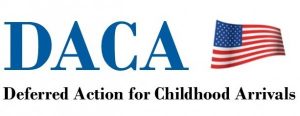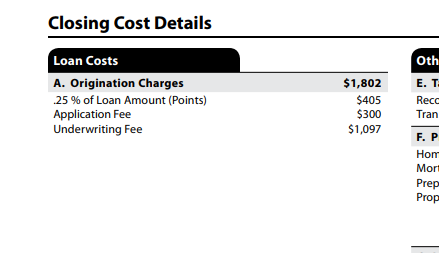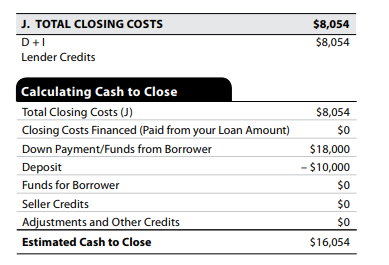Mortgage Loans for DACA Recipients in Colorado(Updated 2023)
What Is DACA?
The Deferred Action for Childhood Arrivals Program, known as DACA is a program that protects undocumented individuals in the U.S. The purpose of DACA is to protect eligible immigrants who came to the US when they were children from deportation. DACA gives young undocumented immigrants protection from deportation and the opportunity to receive a work permit. The program is subject to renewal every two years. DACA can also be referred to as the C33 or DA program.
Can a Colorado DACA Resident get a Home Loan?
Yes, DACA Recipients are eligible to apply for a conventional or FHA loan. We are accepting DACA applicants who have the ability to do a minimum 3% – 3.5% down payment. The great part about our DACA program is that the borrower is eligible to receive the same low rates that we offer everyone else! You can read about different loan options below.
Non-permanent resident aliens with DACA status are eligible if they meet the following criteria:
• Property will be the borrower’s primary residence
• The borrower must have a valid Social Security Number (SSN) & Credit score above 580+
• The borrower is eligible to work in the U.S. Must be documented by the Employment Authorization Document(EAD DACA Card) issued by the USCIS. More details below.
720-535-4321 Purchase / Compra
720-514-3388 Refinance / Refinanciar

COLORADO DACA MORTGAGE PROGRAM
The three guidelines above are the most important factors for Colorado DACA recipients who would like to apply for a home loan. Here are some more details to help assess if a borrower will be eligible:
• Must have decent credit history showing ability to repay loans. We’re looking for a minimum credit score of 620 and a reasonable history of previous credit such as credit cards, student loans or auto loans. Credit scores below 620 will be considered on a case by case basis.
• Must have a stable job history. There is no particular requirement for time on the job but the underwriter will be looking for a reasonable work history of 2+ years. Must be able to document income through W2s and pay stubs or tax returns in case of a self-employed individual.
Please contact us for more information but here are some details about different loan options:
Conventional 30 year fixed
- Requires minimum 3% down payment
- Ideal for borrowers with 700+ credit score
- Down payment can be a gift from family member or employer
- Must be owner Occupied / No investment properties
- Eligible Properties: Single Family Home, Town-home, Warrantable and approved Condos
- Must meet income guidelines just like any other applicant
Conventional Home Ready/Home Possible
- Requires minimum 3% down payment
- Ideal for borrowers with 680+ credit score
- Reduced mortgage insurance and slightly lower rates than conventional loans
- Income limits apply typically under $94,240 in the Denver Metro Area
- Must be owner Occupied / No investment properties
- Eligible Properties: Single Family Home, Town-home, Warrantable and approved Condos
- Learn More about HomeReady & Home Possible
FHA 30 year fixed
- Requires minimum 3.5% down payment
- Ideal for borrowers with 620+ credit scores but below 700
- Down payment can be a gift from family member or employer
- Must be owner Occupied / No investment properties
- Eligible Properties: Single Family Home, Town-home, Warrantable and approved Condos
- Must meet income guidelines just like any other applicant
What Documents Are Required
⇒ Conventional
If the client has Deferred Action of Childhood Arrivals (DACA), the eligible client must provide an unexpired copy of their EAD with Code C33.
⇒ FHA
If the client has Deferred Action for Childhood Arrivals (DACA), the eligible client must provide one of the following:
- Unexpired copy of their EAD indicating DACA status (Code C33)
- USCIS Form I-797 notice indicating approval of a USCIS Form I589, Application for Asylum or Withholding of Removal substantiating the DACA status.
Do You Qualify?
These type of loans are reviewed on a case by case basis so please contact us at 720-535-4321 and we can do a free no obligation pre-approval for you. Our office is located in Denver and we originate mortgages all across the State of Colorado.
La pregunta es, puede comprar usando su DACA?
Claro que si! A los residentes de DACA, le estamos dando la oportunidada de aplicar con nosotros.
Estos son los requisitos para los que toda villa no son residentes-permanante:
- La propiedad tiene que ser ocupada por uste directamente como residencia personal.
- Tiene que tener credito ariba de 620+puntos.
- El comprador tiene que tener visa o derecho de trabajo en Los Estados Unidos.
- 3.5% de enganche sobre prestamos FHA o 3% de enganche usando prestamo convencional.
- El enganche puede ser regalo de un familiar o de su trabajo.
- Tiene que ser para su vivienda principal/No para negocio.
- EPropiedades disponibles:Viviendas de una unidad, Casas pegadas o TownHomes y condominio asegurados por FHA.
- Tiene que estar aprovado con su ingresso y pasar los requisitos necessarios para el prestamo.
Nuestra direccion: 6464 S. Quebec St. Suite 450. Centennial, Co. 80111
720-535-4321 Purchase / Compra
720-514-3388 Refinance / Refinanciar
Hable nos para tomar su aplicaccion. Gracias.
Helpful Links Regarding Non-Permanent Resident Alien Mortgage Eligibility
Fannie Mae Non–U.S. Citizen Requirements







